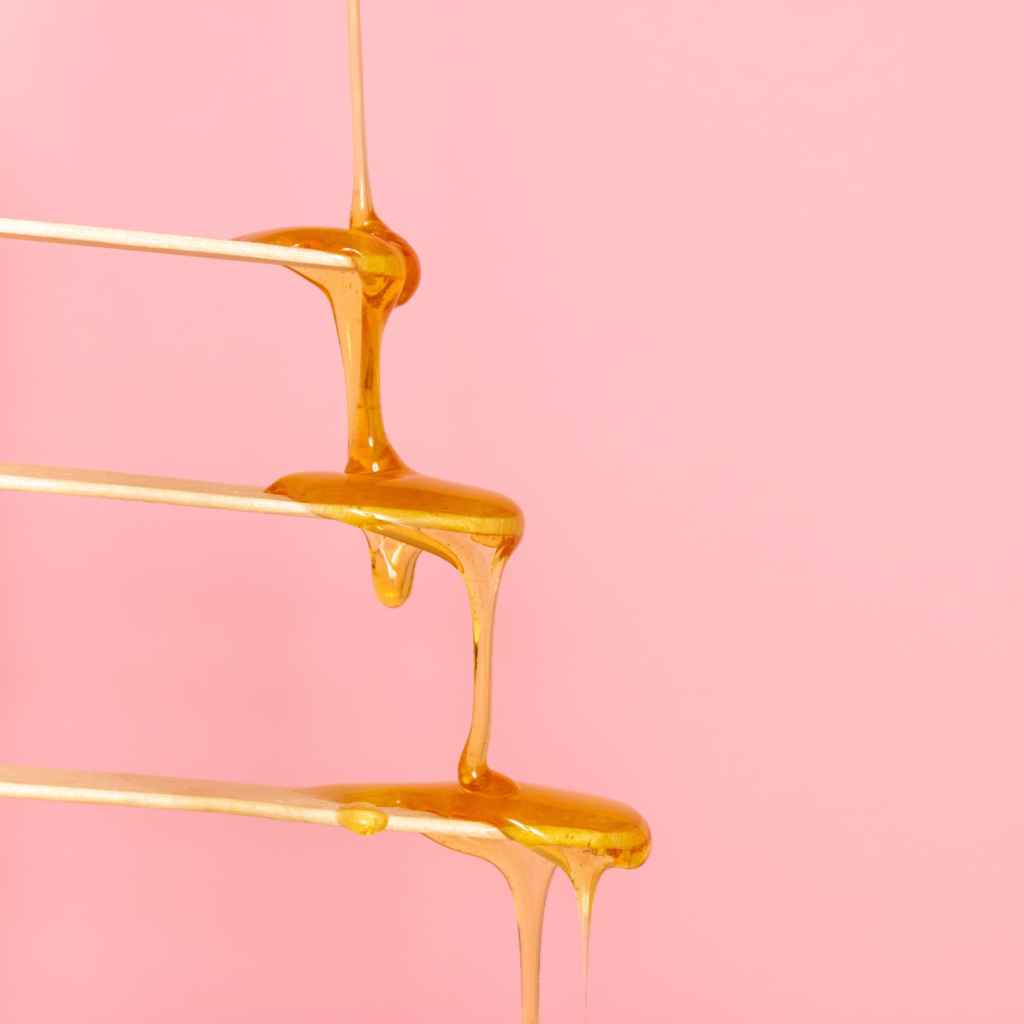What Are the Major Differences Between Sugaring and Waxing?
Aside from their ingredient makeups, waxing and sugaring are performed using two separate techniques. “The sugaring technique removes hair in the direction of hair growth, which is the opposite of waxing,” Salome Sallehy, founder of Sugar Sugar Wax, told POPSUGAR. According to Sallehy, removing the hair this way results in less breakage of the hair, meaning there’s a better chance you won’t experience ingrown hairs or stubble after sugaring, and your results can last you anywhere from six to eight weeks.
Alternatively, waxing removes the hair against the direction of growth. “With waxing, hair is removed from the root so eventually when the hair does grow back it will be softer, and finer,” Gina Patek, education manager at European Wax Center, said. “The benefits are that it provides long lasting results.” Usually the results of waxing can last around three to four weeks.
Sugar paste is also more solid than wax, and in most cases, one lump can be used to remove hair from an entire area of the body or at least until it’s no longer able to pick up hair. “A lot of brands label cold wax as sugar wax, and it’s really important to understand that not all sugar waxes are made equal,” Sallehy said. “The key indicator is whether you’ll need strips to remove the wax. If you have to use strips, then it’s not the sugaring method which is applied by hand and reused.”
Which One Is the Least Painful?
Pain is relative depending on each individual’s tolerance, but many people have claimed that sugaring is slightly less painful than waxing.
“Sugaring wax has a very unique property; it strictly grabs dead skin cells, which is what hair is made up of as well,” Sallehy said. “When you’re pulling sugar wax, you’re only pulling on the dead skin, not live skin, which is why you barely feel it at all.”
Still, that’s not to say that any hair removal method that involves removing the hair from the root will ever be completely pain-free. “If you’re removing virgin hair, which are the follicles that you were born with that have never been removed, it doesn’t matter what method you use, it’s going to hurt,” Sallehy said. “That pain doesn’t come from the skin but rather from the nerve endings attached to the root of the hair.”

